Growth or Decay?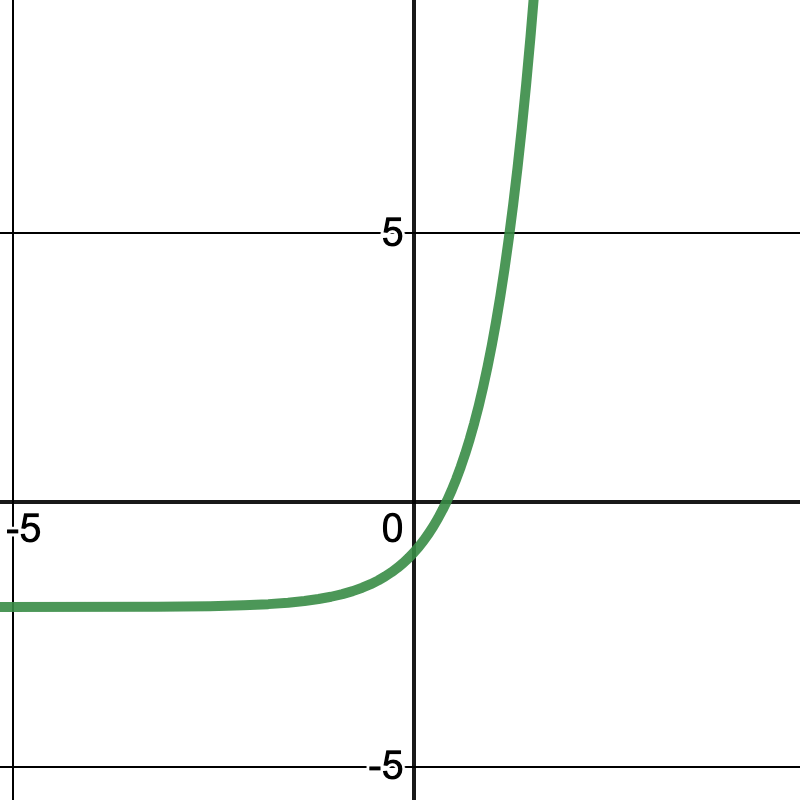
Growth because the graph is always increasing
What is the asymptote for any exponential functions BEFORE any transformations?
x-axis, i.e. y=0
What is the domain of the function?
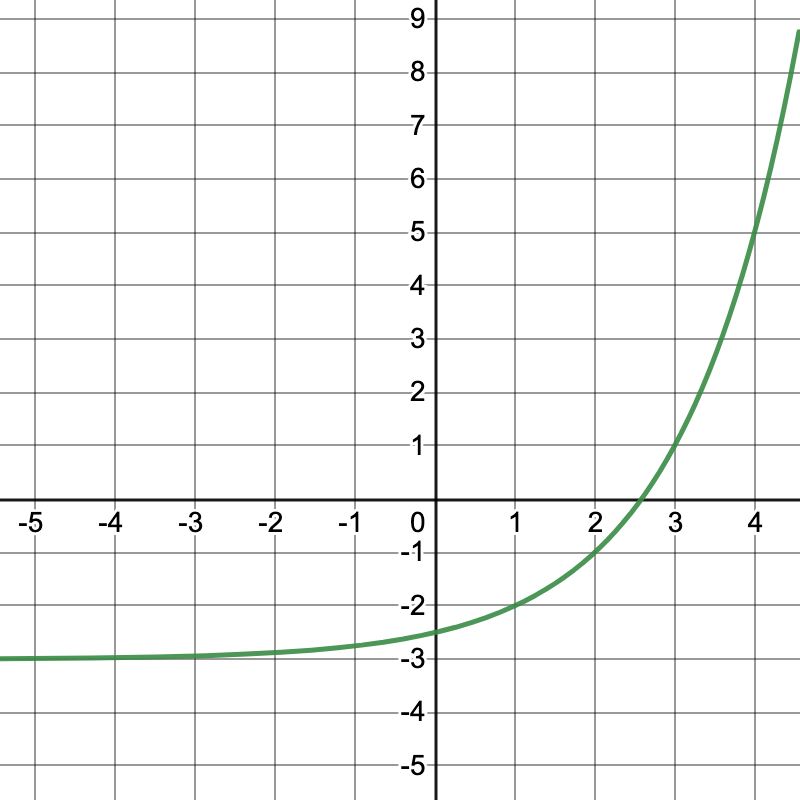
All x-values can be used, making the domain
(-oo,oo)
What is the vertical shift of the following function?
f(x)=-1/2(2^{x-4})
There is no vertical shift. There is no +/- sign at the end of the function.
NONE
Solve for x.
9^{3x-7}=9^{5-x}
x=3
Since the bases are the same, set the exponents equal to each other and solve.
9^{3x-7}=9^{5-x}
3x-7=5x-x
x=3
What is the parent function of the following exponential function?
1/2(4^{x+9})-10
4^x
because it has the x as the exponent
What is the y-intercept for ANY exponential function BEFORE major transformations?
What is the range of the following function?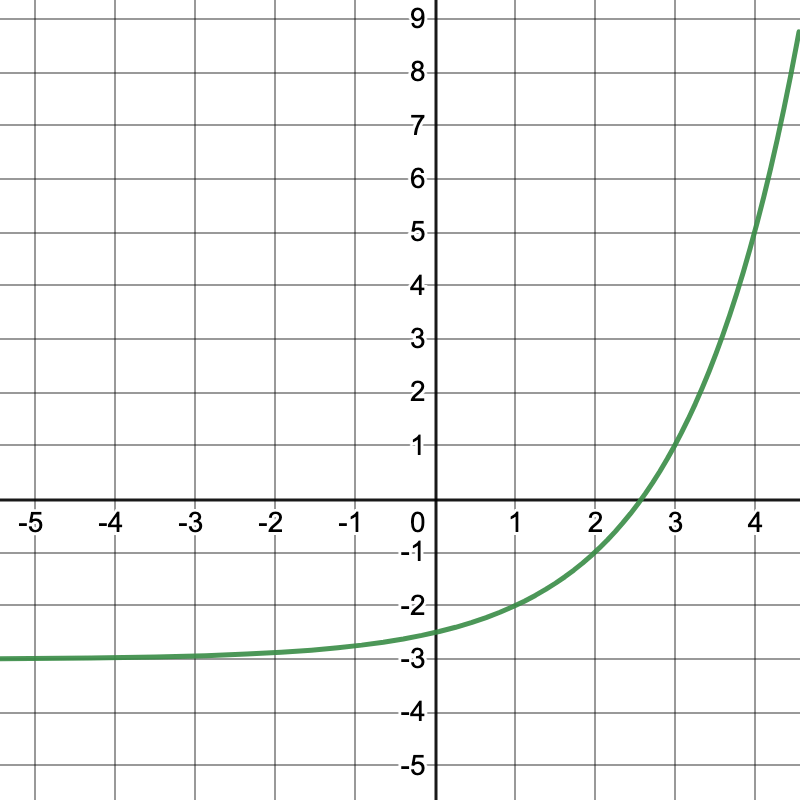
(-3,oo)
The y-values only go as low as -3.
What is the horizontal shift of the following function?
f(x)=-1/2(2^{x-4})
Right 4
X's LIE! It says (x-4), but negative means right.
Solve for x.
2^{x+4}*2^{4x+6}=2^{2x+1}
x = -3
The bases are already the same, so we just need to combine the left side by adding the exponents. (Remember your exponent rules!)
2^{x+4}*2^{4x+6}=2^{2x+1}
2^{(x+4)+4x+6}=2^{2x+1}
2^{5x+10}=2^{2x+1}
5x+10=2x+1
x=-3
Growth or Decay?
f(x)=5(2/3)^x
Decay because
2/3 < 1
What is the asymptote?
f(x)=3^{x-1}-6
y=-6
(Look at the vertical shift)
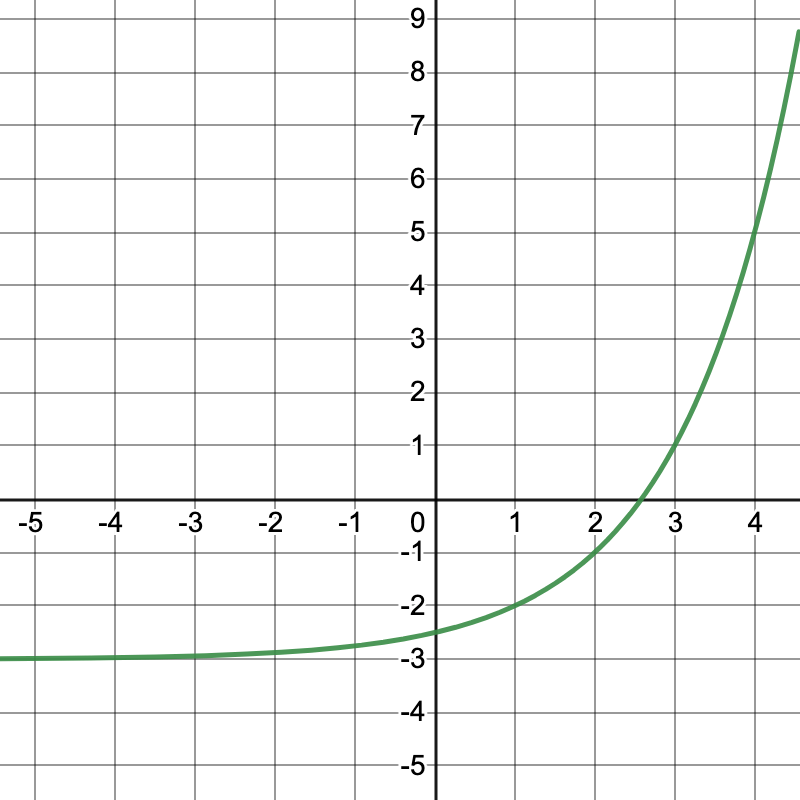
End Behavior: As x->oo, f(x)->_
oo
Looking to the right of the graph, the y-values continue forever.
What does the negative sign indicate?
f(x)=-1/2(2^{x-4})
Reflection across the x-axis
Solve for x.
49^{x+1}=343^{2x}
x=1/2
Rewrite each one so they have the same base. For this problem, the common base would be 7. Then, multiple the exponents.
49^{x+1}=343^{2x}
(7^2)^{x+1}=(7^3)^{2x}
7^{2x+2}=7^{6x}
2x+2=6x
x=1/2
Growth or decay?
f(x)=1/3(6/5)^x
Growth because
6/5 > 1
What is the y-intercept for the function below? WITHOUT DOING ANY MATH
1/2(3^x)
Since there are no big transformations, it is just the number in front, i.e.
(0,1/2).
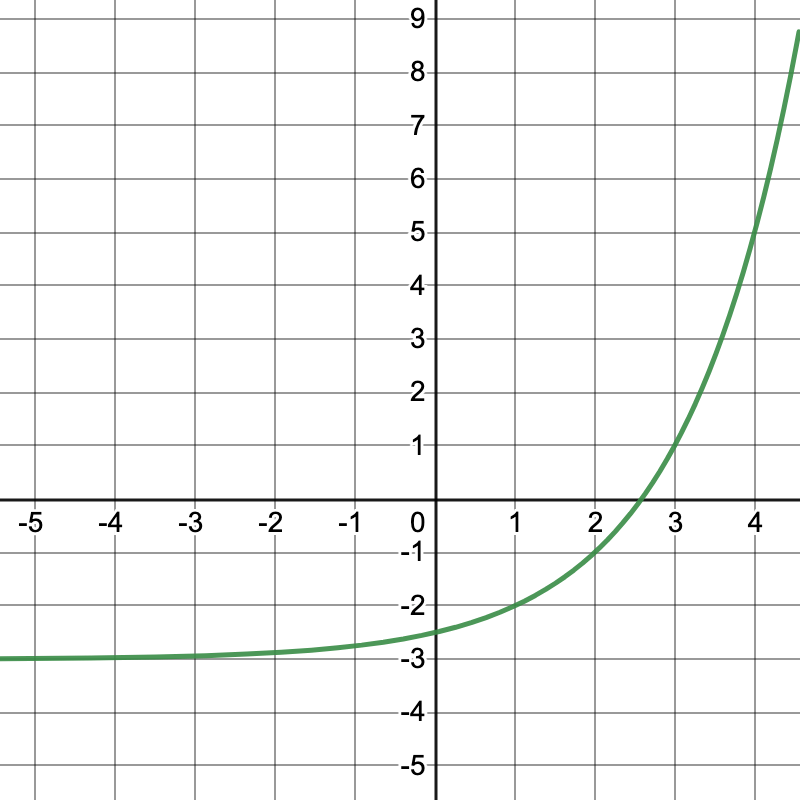
End Behavior: As x->-oo, f(x)->
-3
Looking on the left side of the graph, the y-values never passes -3. It never touches the -3, but it is still approaching -3.
What does the 1/2 indicate?
f(x)=-1/2(2^{x-4})
Vertical Compression since 1/2 < 1
It is getting closer and closer to the x-axis
Solve for x.
(1/4)^{2x}=32^{4x-2}
x=5/12
Rewrite each one so they have the same base. For this problem, the common base would be 2. Then, multiple the exponents.
(1/4)^{2x}=32^{4x-2}
(2^{-2})^{2x}=(2^5)^{4x-2}
2^{-4x}=2^{20x-10}
-4x=20x-10
x=10/24=5/12
Write a possible parent function for this graph.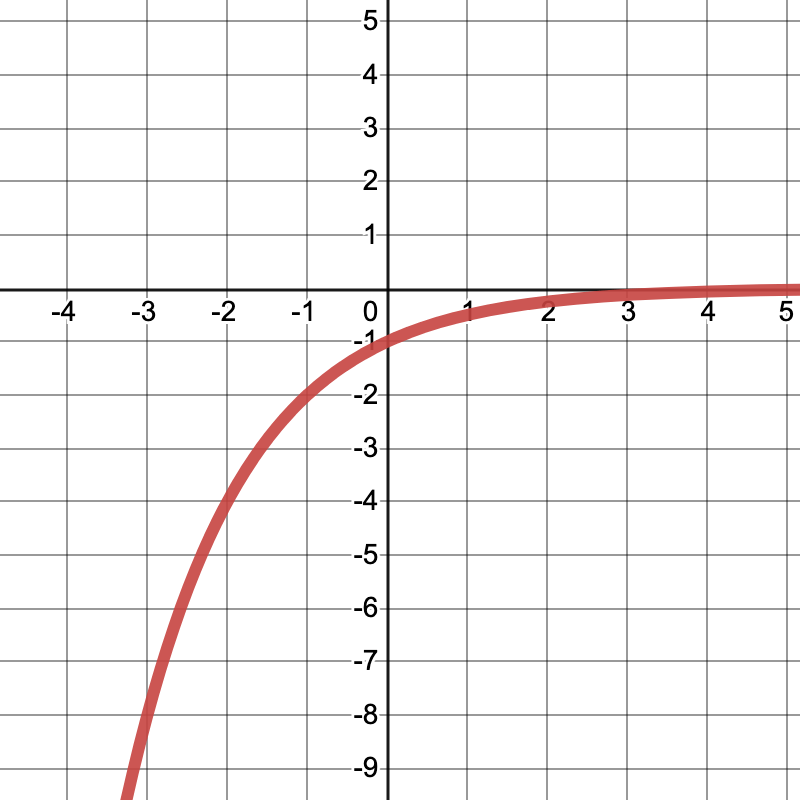
Anything with -1<b<0
Ex) 1/2, 1/3, 1/4, 2/5
It is a decay function that has been reflected, so the parent function needs to be a fraction (not an improper fraction)
What is the y-intercept for the following function?
-2(1/3)^{x}-3
Plug 0 in for x.
(0,-5)
Sketch the function:
-2(4^x)-1
Growth
Reflection over x-axis
Asymptote: y = -1
Y-intercept: (0,-3)
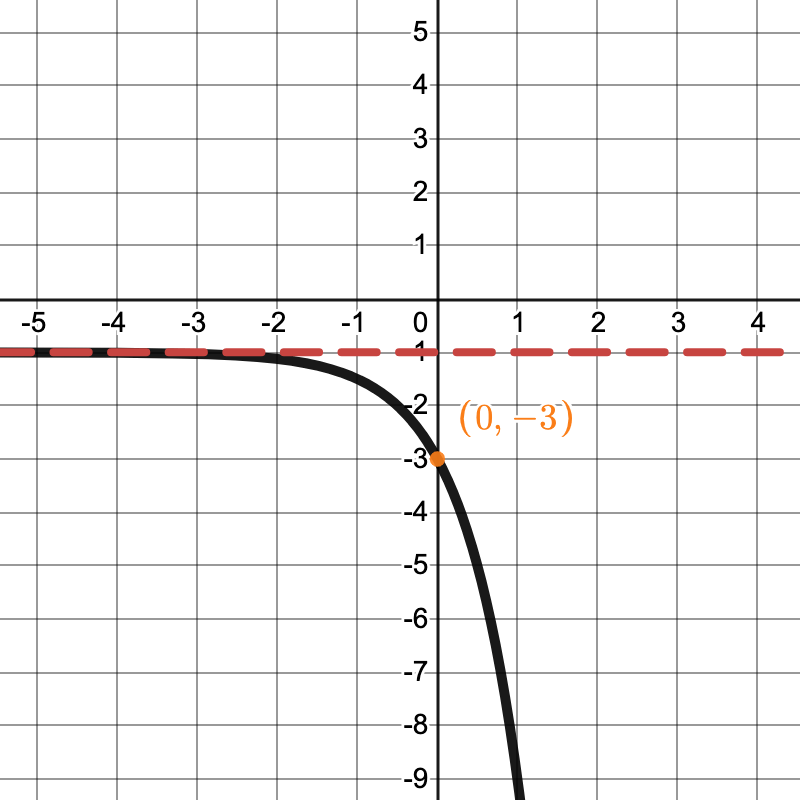
Write an equation to represent the new function:
Parent Function: 5^x
Reflection across the x-axis
Vertical stretch by a factor of 3
Horizontal shift Right 2
Vertical Shift Down 1
f(x)=-3(5^{x-2})-1
Solve for x.
36^{x-3}*216^x=216^{2x+1}
x = -9
Rewrite each with the same based, add necessary exponents, and set equal to each other.
36^{x-3}*216^x=216^{2x+1}
(6^2)^{x-3}*(6^3)^x=(6^3)^{2x+1}
6^{2x-6}*6^{3x}=6^{6x+3}
6^{5x-6}=6^{6x+3}
5x-6=6x+3
x=-9